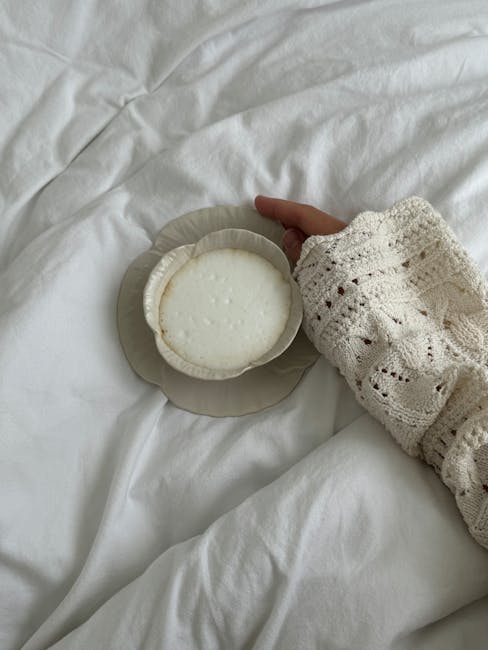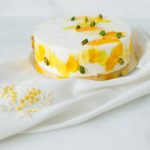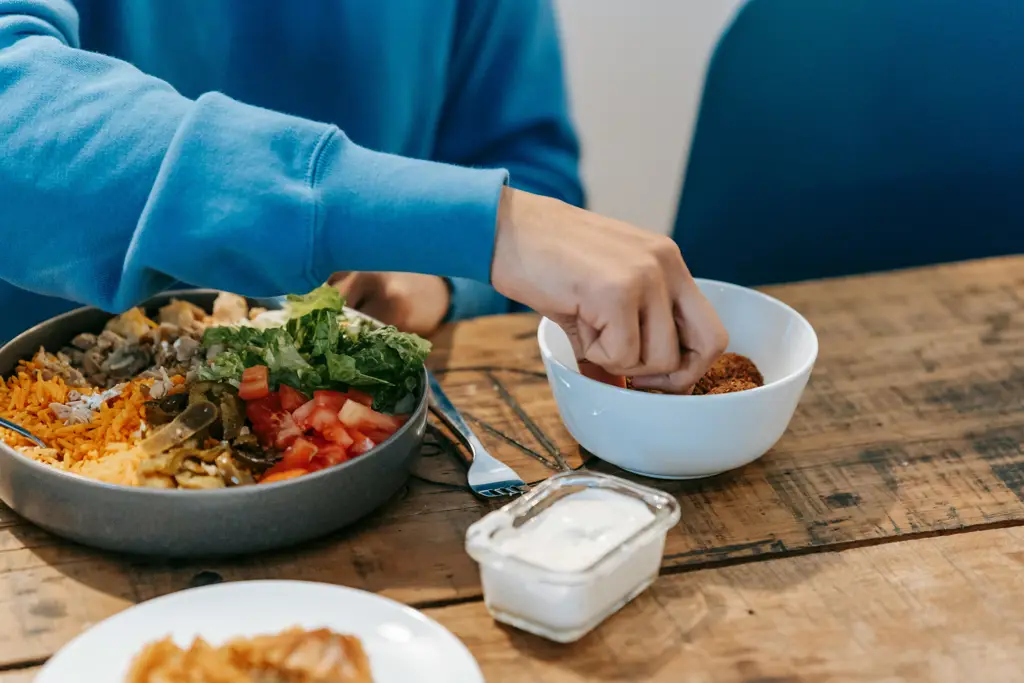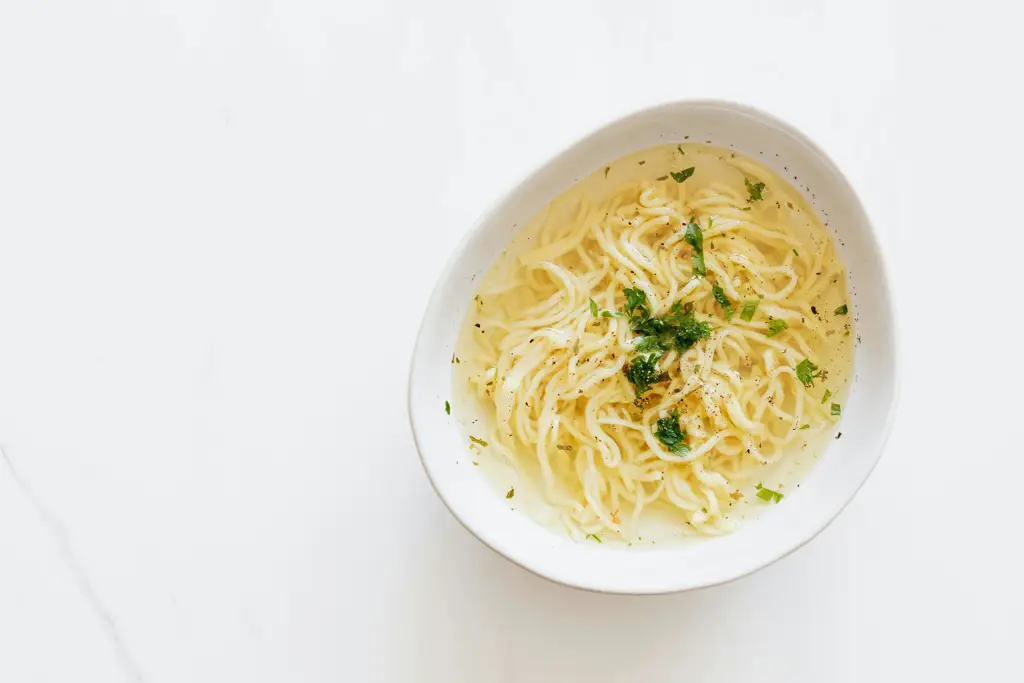Prepare to embark on a culinary journey to the heart of Ethiopia with a dish as rich in history and culture as it is in flavor: Homemade Ethiopian Firfir. This iconic breakfast staple, and sometimes a comforting meal at any time of day, isn’t simply a food; it’s a testament to Ethiopian ingenuity and resourcefulness. Firfir, meaning to crumble in Amharic, is a dish built on the foundation of injera, the spongy, slightly sour flatbread that serves as both plate and utensil in Ethiopian cuisine. Its origins are deeply rooted in the agricultural practices of the Ethiopian highlands, where the teff grain, the primary ingredient in injera, thrives.
The history of Firfir is intertwined with the history of injera itself. Teff cultivation in Ethiopia dates back thousands of years, with evidence suggesting its use as far back as the 4th millennium BC. This resilient grain, with its high nutritional value and ability to grow in challenging conditions, became the cornerstone of Ethiopian cuisine. Firfir’s creation likely evolved organically, a practical way to utilize leftover injera. Instead of discarding the slightly hardened bread, resourceful cooks discovered the delicious possibilities of crumbling it, adding spices, and enriching it with flavorful additions like berbere spice, clarified butter (niter kibbeh), and sometimes a hearty helping of wat (Ethiopian stew) leftovers. This ingenious repurposing reflects the deeply ingrained ethos of minimizing waste and maximizing resources—a characteristic deeply embedded in Ethiopian culture.
Beyond its practical origins, Firfir holds significant cultural importance in Ethiopia. It’s a common breakfast dish, enjoyed by families across the country, representing a simple yet satisfying start to the day. It’s often shared communally, reinforcing the importance of family and togetherness in Ethiopian society. Interestingly, the preparation and presentation of Firfir can vary regionally, with subtle differences in spice blends and additions reflecting local tastes and traditions. While the basic concept remains consistent—crumbled injera enriched with flavorful additions—the specific variations offer a fascinating glimpse into the diversity of Ethiopian culinary heritage. Furthermore, Firfir’s enduring popularity highlights the resilience and adaptability of Ethiopian cuisine, showcasing how a simple dish can hold profound cultural weight and continue to evolve over centuries. It’s a dish that speaks volumes about the resourcefulness, community spirit, and deep-rooted agricultural traditions of Ethiopia.
Ingredients and Measurements for Homemade Ethiopian Firfir
Creating authentic Ethiopian Firfir requires careful attention to ingredient quality and precise measurements. The success of this dish hinges on the balance of flavors and textures, so don’t skimp on the details!
Injera: You’ll need a good quantity of injera bread for this recipe. While you can make your own injera (and it’s highly recommended for the best flavor!), you can also purchase pre-made injera from Ethiopian grocery stores or specialty markets. For a serving of 4-6 people, plan on using approximately 8-10 medium-sized injera pieces (about 12-15 inches in diameter). The injera should be slightly stale, as this makes it easier to shred and creates a better texture in the final dish. If using freshly made injera, allow it to sit at room temperature for at least a few hours, or even overnight, before using.
Meat (Optional, but traditionally included): Traditionally, Firfir utilizes leftover wat (a stew). If using leftover wat, the quantity will depend on the amount you have available. Aim for approximately 2-3 cups of well-seasoned, slightly cooled wat. Popular wat choices include chicken, beef, or lamb. If you don’t have leftover wat, you can prepare a simple spiced meat stew beforehand. For a homemade stew, you’ll need about 1.5 lbs of your chosen meat, cut into bite-sized pieces. Season generously with berbere spice blend (see below).
Berbere Spice Blend: The heart and soul of Ethiopian cuisine, berbere is a complex blend of spices. You can buy pre-made berbere, but for the most authentic flavour, consider making your own. A typical berbere blend includes (quantities are approximate and can be adjusted to your taste): 2 tablespoons paprika, 1 tablespoon ground cumin, 1 tablespoon ground coriander, 1 tablespoon fenugreek, 1 tablespoon ginger, 1 teaspoon turmeric, 1 teaspoon cardamom, 1 teaspoon cinnamon, ½ teaspoon cloves, ½ teaspoon cayenne pepper (or more, to taste), and ½ teaspoon black pepper. Always taste and adjust the spices to your preference.
Butter (Niter Kibbeh): 2-4 tablespoons of clarified butter (niter kibbeh) are essential for enriching the flavor and adding a glossy sheen to the Firfir. Clarified butter is crucial as it has a higher smoke point than regular butter and won’t burn easily during the cooking process. If you don’t have clarified butter, you can substitute with ghee or even a high-quality vegetable oil, but the flavor will be slightly different.
Onion: Finely chopped onions add a pleasant sharpness to the Firfir. Use one medium-sized onion, finely chopped. Consider using a combination of yellow and red onion for a more visually appealing dish.
Garlic: 2-3 cloves of garlic, minced, will add a pungent and aromatic element to the Firfir. Don’t be shy with the garlic; it’s a key component in many Ethiopian dishes.
Salt and Pepper: Season to taste with salt and freshly ground black pepper. Remember to taste the Firfir at various stages of preparation to ensure the seasoning is balanced.
Optional additions: For extra flavor and texture, you can add other ingredients such as chopped tomatoes, green chilies (serrano or jalapeño), or a squeeze of lemon juice at the end.
Important Note: These are guidelines; adjust the quantities based on your preference and the number of servings you’re preparing. The beauty of cooking is experimentation! Don’t be afraid to adjust the spices and ingredients to create your perfect Firfir.
Equipment List: Homemade Ethiopian Firfir
Creating authentic Ethiopian Firfir requires specific equipment to achieve the desired texture and presentation. While some items might be substituted, using the right tools significantly enhances the cooking process and final result. This list details the equipment needed, including recommendations for optimal choices.
1. Large Wok or Wide-Based Pan (14-16 inches): A wok, or a wide, heavy-bottomed pan, is crucial for evenly cooking the injera. Its wide surface area prevents overcrowding and ensures even browning. A 14-16 inch diameter is recommended to accommodate a decent quantity of injera for a good serving of Firfir. Avoid using non-stick pans as the injera can stick and tear during the shredding process. Cast iron or stainless steel are excellent choices due to their heat retention properties.
2. Large Mixing Bowls (at least 2, 5-quart capacity): You’ll need at least two large mixing bowls. One will be used for preparing the injera and the other for mixing the Firfir ingredients. A 5-quart capacity is ideal to comfortably handle the ingredients without spills. Choose bowls that are sturdy and won’t easily tip over, especially when mixing the slightly wet Firfir.
3. Sharp Knife (Chef’s Knife or Bread Knife): A sharp knife is essential for effectively shredding the injera. A chef’s knife (8-10 inches) is versatile, but a bread knife with its serrated edge can also work well to create even, consistent shreds. A dull knife will tear the injera, resulting in uneven pieces and a less appealing final product. Regular sharpening is recommended for optimal performance.
4. Spatula or Wooden Spoon: A spatula or a sturdy wooden spoon is needed for mixing the Firfir ingredients thoroughly. A wide spatula allows for even distribution of the spices and ensures all the injera is well incorporated. Avoid using metal utensils as they can damage the pan’s surface (especially if using a non-stick pan, even though that’s not recommended). A heat-resistant spatula is preferable for safety.
5. Measuring Cups and Spoons: Accurate measurements are crucial for consistent results. A set of measuring cups (dry and liquid) and spoons is essential for accurately measuring spices, oil, and other ingredients. Use standardized measuring tools to avoid inconsistencies in flavor and texture.
6. Cutting Board: A sturdy cutting board of sufficient size is essential for safely preparing the ingredients. Choose a cutting board made of materials that are easy to clean and won’t harbor bacteria, such as plastic or wood (properly sanitized).
7. Serving Platter or Bowl: Finally, a large, attractive platter or bowl is needed for serving the delicious Firfir. The presentation of the dish adds to the overall dining experience. Choose a serving dish that complements the dish and is large enough to comfortably hold the serving portion.
Having all this equipment ready before you begin will streamline your Firfir-making process and significantly improve the outcome. Remember to always prioritize safety and hygiene when handling food and equipment.
Preparation of the Injera
Injera, the spongy flatbread that forms the base of Firfir, is crucial to the dish’s success. Its slightly sour flavor and unique texture are essential components. Making injera from scratch requires a little patience and attention to detail, but the reward is well worth the effort. This recipe yields enough injera for a generous serving of Firfir for 2-3 people.
Ingredients for Injera:
- 2 cups teff flour (preferably a blend of brown and white for best results)
- 1 cup water (plus extra as needed)
- 1 teaspoon baking soda
- ½ teaspoon salt (optional, some prefer injera without salt)
Instructions:
1. Preparing the Batter (Injera Batter): Begin by thoroughly mixing the teff flour, baking soda, and salt (if using) in a large bowl. Gradually add the water while stirring vigorously with a whisk or a fork to avoid lumps. The consistency should be that of a thick pancake batter, slightly runnier than typical pancake batter. It’s crucial to avoid overmixing, which can lead to tough injera. If the batter is too thick, add more water, a tablespoon at a time, until you achieve the desired consistency. Cover the bowl and let the batter ferment at room temperature for 2-3 days. This fermentation process is vital for the development of the characteristic sour flavor and texture of injera. The batter will bubble and slightly increase in volume.
2. Cooking the Injera: Once the batter has fermented, preheat a non-stick skillet or special injera pan (preferably a flat, heavy-bottomed pan) over medium heat. Do not use oil or grease the pan. The teff flour naturally contains enough oil to prevent sticking. Pour ¼ cup of batter onto the hot pan, quickly swirling the pan to spread the batter evenly into a thin, round circle. The size of the injera will depend on the size of your pan; adjust the amount of batter accordingly.
3. The Cooking Process: Cook for approximately 1-2 minutes per side, or until small bubbles appear on the surface and the edges begin to pull away from the pan. Do not flip the injera too early, as this can lead to tearing. When the bottom is lightly browned and the top appears cooked, carefully lift the injera with a thin spatula and transfer it to a plate. Stack the injera as you cook. Important: As the injera cooks, it will tend to puff up slightly; this is normal. However, avoid high heat, which can cause burning.
4. Important Considerations: The first few injera may not turn out perfectly; this is a learning process. Adjust the heat as needed to achieve the optimal cooking time and texture. The ideal injera is slightly spongy, slightly sour, and has a soft but not mushy texture. Proper fermentation is key to achieving the desired taste and texture. If the batter does not ferment sufficiently, the injera will be tough and lack its characteristic flavor. After cooking, stack the injera with a clean cloth or paper towel between each to prevent sticking.
Once you have prepared a sufficient quantity of injera, you are ready to proceed with making your Firfir. Enjoy!
Preparation of the Wat (Spicy Stew)
The wat, or spicy stew, is the heart of a delicious Firfir. Its rich, flavorful sauce complements the fluffy, slightly tangy injera perfectly. This recipe focuses on a classic berbere-spiced wat, but feel free to adjust the spice level and ingredients to your preference. Accurate measurements are crucial for achieving the desired consistency and flavor.
Begin by preparing your berbere spice blend. If using a pre-made blend, ensure it’s of high quality. For a truly authentic experience, consider making your own using a recipe you trust. The complexity of flavors will significantly elevate your Firfir. A good berbere blend is the foundation of a great wat.
Heat 2 tablespoons of clarified butter (or vegetable oil) in a large, heavy-bottomed pot over medium heat. Once hot, add 1 medium-sized onion, finely chopped, and sauté until softened and translucent, about 5-7 minutes. Avoid burning the onions, as this can impart a bitter taste. Low and slow cooking is key here.
Next, add 2 cloves of garlic, minced, and 1 inch of ginger, grated. Sauté for another minute until fragrant. This step releases the aromatic compounds, enhancing the overall flavor profile of the wat. Don’t rush this step; allow the aromas to meld.
Now, add 2 tablespoons of your berbere spice blend. Stir continuously for about 1 minute, allowing the spices to toast slightly in the oil. This blooming of the spices helps to release their full potential. Be careful not to burn the spices, which will make the wat bitter.
Introduce 1 pound of boneless, skinless chicken thighs (or lamb, beef, or vegetables for a vegetarian option), cut into 1-inch cubes. Brown the meat evenly on all sides. This step adds depth and richness to the stew. Ensure the meat is well-browned for optimal flavor.
Pour in 4 cups of chicken broth (or vegetable broth for a vegetarian option). Bring the mixture to a boil, then reduce heat to low, cover, and simmer for at least 45 minutes, or until the chicken is tender and cooked through. Simmering allows the flavors to develop fully.
Once the chicken is cooked, taste and adjust the seasoning as needed. You might want to add more berbere for extra heat, or salt to balance the flavors. Taste testing is crucial throughout the cooking process.
For a thicker wat, you can remove some of the cooking liquid and whisk 1 tablespoon of all-purpose flour into it before adding it back to the pot. Simmer for another 5-10 minutes, stirring occasionally, until the desired consistency is achieved. Thicken the wat only if needed; some prefer a lighter consistency.
Once the wat is ready, remove it from the heat and let it cool slightly before serving it over your fluffy Firfir. Garnish with fresh cilantro or green onions, if desired. Enjoy your homemade Ethiopian Firfir!
Combining Firfir: Bringing It All Together
The final stage of making Firfir, combining the ingredients, is crucial for achieving the perfect texture and flavor. This involves carefully incorporating the kitfo (seasoned minced beef, or vegetarian alternative) with the injera base, ensuring even distribution and a cohesive, yet slightly crumbly, consistency. The process should be gentle to avoid over-mixing and creating a mushy result.
Begin by preparing your injera. Ensure your injera is slightly dried out; freshly made injera will be too moist and will make the Firfir too wet. You can achieve this by leaving it out at room temperature for about 30 minutes, or gently warming it in a low oven (around 150°F/65°C) for 10-15 minutes. The goal is to remove excess moisture without making it brittle.
Tear the injera into bite-sized pieces. For a typical serving of Firfir for two people, you’ll need approximately 4-5 medium-sized pieces of injera. The amount of injera will depend on the desired consistency; more injera will result in a drier Firfir, while less will make it moister. Experiment to find your preferred ratio.
In a large mixing bowl, gently crumble the dried injera pieces. Avoid using a food processor or blender as this will create a paste-like consistency. The goal is to break down the injera into small, manageable pieces, retaining some of its structural integrity. This textural element is key to a good Firfir.
Now, add your prepared kitfo. If you’re using a meat-based kitfo, ensure it’s properly seasoned and at room temperature. For a vegetarian option, you can use a mixture of sautéed lentils, chickpeas, or mushrooms seasoned with berbere spice blend. Start with approximately 150-200 grams of kitfo for two servings; adjust according to your preference.
Using a clean, sturdy spoon or spatula, gently fold the kitfo into the crumbled injera. Avoid vigorous stirring or mashing. The objective is to coat each injera piece evenly with the kitfo, creating a harmonious blend of flavors and textures. Continue folding until everything is thoroughly combined but still slightly chunky.
Once combined, taste and adjust seasoning if needed. You might need to add a pinch more berbere spice, salt, or a squeeze of lemon juice to enhance the flavor profile. Serve immediately for the best taste and texture. The Firfir is best enjoyed fresh, as it can become dry if left to sit for too long.
Pro Tip: For an extra layer of flavor, you can incorporate a tablespoon of clarified butter (niter kibbeh) or a drizzle of olive oil into the Firfir just before serving. This adds richness and a pleasant sheen.
Serving Suggestions for Homemade Ethiopian Firfir
Ethiopian Firfir, a flavorful and comforting dish, is best enjoyed with a thoughtful consideration of its texture and bold spices. While traditionally eaten by hand with injera, there are several ways to enhance your Firfir experience and cater to different preferences.
The Classic Approach: Injera Embrace The most authentic way to enjoy Firfir is with a generous portion of injera. Use approximately two to three large pieces of injera per serving. Tear the injera into bite-sized pieces and scoop up the Firfir using the injera as your utensil. This allows for a delightful interplay of textures – the soft, slightly spongy injera contrasting beautifully with the crumbly, spiced Firfir. Don’t be shy with the injera! It’s an integral part of the dining experience.
Elevating the Experience: Accompanying Dishes To complement the rich flavors of Firfir, consider serving it alongside some traditional Ethiopian accompaniments. A small bowl of awaze (a spicy berbere-infused chili sauce), about 2-3 tablespoons per serving, adds a fiery kick. Similarly, a dollop of niter kibbeh (clarified butter), approximately one teaspoon, lends a luxurious richness and smooths out the Firfir’s texture. A side of gomen (Ethiopian collard greens) provides a refreshing counterpoint to the Firfir’s intensity.
Modern Adaptations: For the Western Palate While the traditional method is highly recommended, you can adapt the serving style for those unfamiliar with injera or who prefer a more familiar dining experience. Serve the Firfir in a bowl, alongside a selection of accompaniments. You can use flatbread, pita bread, or even toasted baguette slices as a substitute for injera. Simply use the bread to scoop up the Firfir, ensuring you get a good balance of the spiced meat and the flavorful sauce. Consider providing forks as an option for those who prefer not to use bread.
Temperature Considerations: Serve it Warm! Firfir is best served warm, ideally straight from the pan or gently reheated. The warmth enhances the aromas and flavors of the spices, making for a more enjoyable culinary experience. If reheating, do so gently over low heat to avoid drying out the Firfir. Avoid microwaving, as this can result in a less appealing texture.
Presentation Matters: A Feast for the Eyes Even a simple dish like Firfir can be elevated with thoughtful presentation. Arrange the Firfir attractively in a bowl, ensuring a visually appealing mound. Garnish with a sprinkle of fresh herbs, such as chopped cilantro or parsley, for a touch of freshness and vibrancy. The strategic placement of accompaniments around the Firfir adds to the overall aesthetic appeal, creating a truly inviting culinary experience.
Portion Sizes: Adjust to Your Appetite A typical serving of Firfir is approximately one and a half to two cups. However, adjust the portion size according to your appetite and the number of accompanying dishes you’re serving. Remember that Firfir is a hearty and filling dish, so start with a smaller portion and add more if needed.
Recommendations for Homemade Ethiopian Firfir
Serving Suggestions: Firfir, with its rich, buttery texture and slightly spicy kick, is best enjoyed as a hearty and satisfying main course. It’s traditionally eaten for breakfast, lunch, or dinner. Serve it hot, directly from the pan, allowing the slightly crispy edges to add a delightful textural contrast to the soft, fluffy interior. We recommend using injera, the spongy Ethiopian flatbread, to scoop up the firfir. Tear off a piece of injera, use it to gather a generous portion of the firfir, and savor each bite. Alternatively, you can serve it alongside other Ethiopian staples like wat (stew) or kitfo (raw minced beef). The slightly tangy flavor of the firfir complements the richer, spicier notes of many Ethiopian stews beautifully.
Complementary Dishes: To enhance your Firfir experience, consider serving it with a selection of complementary dishes. A simple salad of shredded lettuce, tomatoes, and onions, dressed with a light vinaigrette, can provide a refreshing counterpoint to the richness of the firfir. Similarly, a side of spicy sautéed greens or a flavorful lentil stew can add depth and complexity to your meal. For a truly authentic Ethiopian spread, consider serving various types of wat, such as wat berbere (a spicy stew with berbere spices) or misir wat (red lentil stew), alongside the firfir. The different textures and flavors will create a delightful culinary journey.
Storage Conditions: Leftover firfir can be stored in an airtight container in the refrigerator for up to 3 days. However, the texture may change slightly after refrigeration, becoming slightly firmer. To restore some of its original fluffiness, you can gently warm it in a pan over low heat, adding a tablespoon or two of water or butter if needed. Avoid freezing firfir, as this can significantly alter its texture and flavor. It is best enjoyed fresh.
Calorie and Nutritional Information (Approximate per serving): The exact calorie and nutritional content of firfir will vary depending on the specific ingredients used and portion size. However, a typical serving (approximately 1 cup) can contain approximately 350-450 calories. Firfir is a good source of protein, primarily from the eggs and potentially from any added meat or lentils. It also provides a moderate amount of carbohydrates, largely from the injera used for scooping, and some healthy fats from the butter or oil used in its preparation. The nutritional content can be further improved by adding vegetables to the recipe, increasing the fiber and vitamin content. Please note that this is an estimate, and the values may vary.
Important Note: The spiciness level of your firfir can be adjusted to your preference by modifying the amount of berbere spice used. Start with a small amount and add more gradually until you achieve your desired level of heat. Remember to always practice safe food handling techniques, ensuring all ingredients are fresh and properly cooked. Enjoy your delicious and authentic Homemade Ethiopian Firfir!





